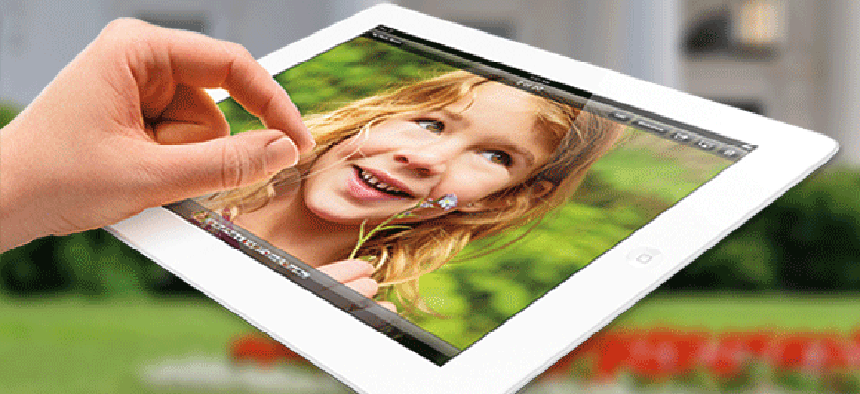Tablets for government: Apple iPad

The iPad's bright display and long battery life may not compensate for its limited processing power and number of ports.
The tablet has become an integral part of the mobile plans of many agencies, complementing and, in some cases, even replacing laptop and desktop PCs. Different models of tablets have different strength and weaknesses, and which one is right for your agencies depends on your own needs. This week, we take a close look at five popular tablets and what they offer agencies.
There are many features that might make Apple’s fourth generation iPad the right choice for an agency’s users, such as the bright display and long battery life. However, its more limited processing power and number of ports might keep it out the hands of certain employees. Prices range from $499 for a 16G Wi-Fi version to $929 for a 128G cellular version.
What works for government agencies
The iPad’s Retina display is a significant improvement over prior iPad versions. The 9.7-inch display is very bright — bright enough even when working in direct sunlight, making it suitable for anyone who might use the device outside occasionally, such as a social worker or field inspector.
Another area where the iPad excels is in its battery life. Everything about the device is optimized to conserve power. As such, the 42.5-watt-hour rechargeable battery can last over nine hours while using a cell provider’s 4G LTE data plan.
The iPad measures 9.5 inches by 7.31 inches by 0.37 inches and weighs 1.46 pounds, making it very portable. It’s light enough that a user would be able to hold or carry it for a while before needing to set it down.
What might not work for government agencies
Although the new Apple A6X processor is a significant improvement over the A5X found in earlier iPads, it is still optimized for low power consumption, so it may not have the performance some agencies require. If mobile users need to create slideshow presentations or huge text documents, then the iPad won’t be a good fit.
Another limitation is the number of peripheral ports. The only two ports on the iPad are for the Lightning connector for power and I/O through a computer’s USB port and the minijack for headphones. The proprietary Lightning cable, which has decently fast throughput, means that the iPad can’t use a standard micro-USB cord (without an adapter).
The iPad doesn’t come with a biometric or smart-card reader, but they can be added with cases such as Precise Biometrics’ Tactivo, which supports Personal Identity Verification and Common Access Cards.
NEXT: 5 tablets for government





